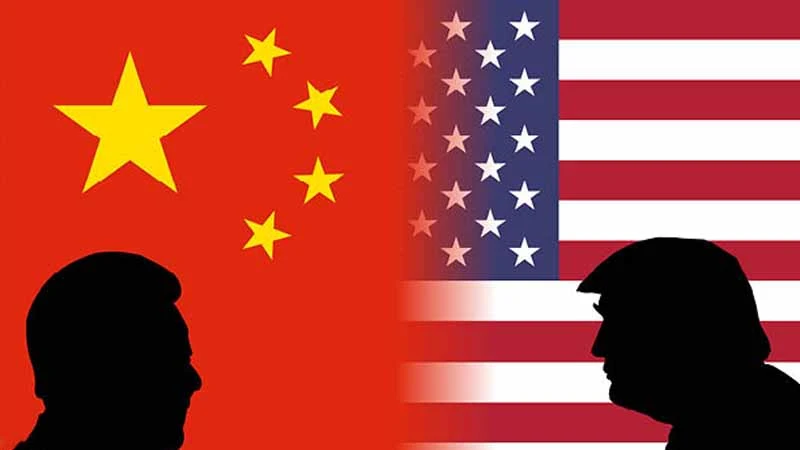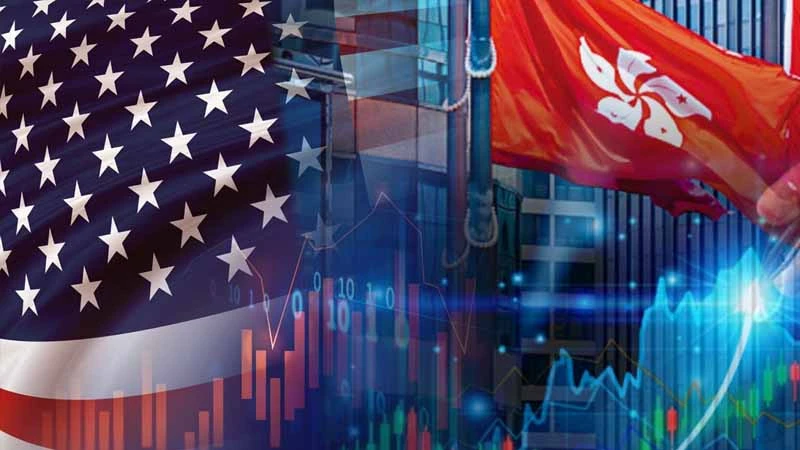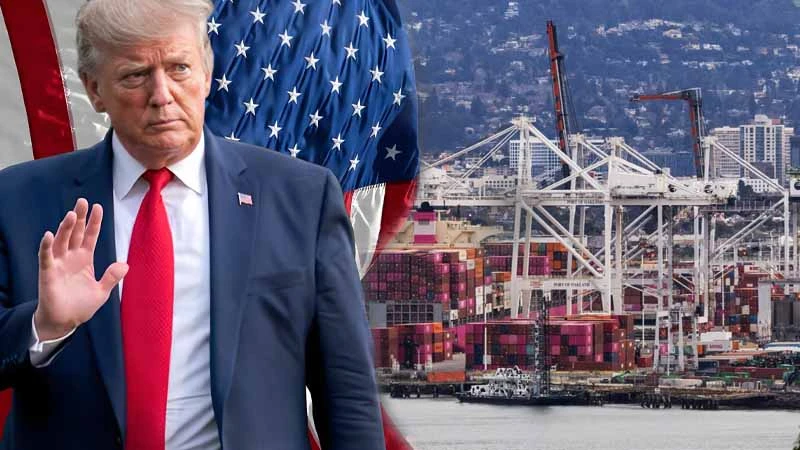China-US Trade War Escalates Again: Analysis of Trump’s Tariff Policy and the Impact of Reciprocal Tariffs on Global Trade
US President Trump’s tariff policy has once again drawn global attention, particularly his proposed “Reciprocal Tariffs” plan, which could further escalate the risk of a global trade war. Since taking office, the Trump administration has repeatedly used tariffs as a policy tool to advance the “America First” strategy and attempted to revise trade agreements to encourage economic reshoring to the US. However, with the introduction of the reciprocal tariffs plan, global trade relations and the world economy are facing new challenges and uncertainties.
What are Reciprocal Tariffs?
Reciprocal Tariffs refer to imposing tariffs on imports into the US that match the tariffs other countries impose on US goods. Trump stated that such measures could ensure fairness in trade and hoped to pressure trade partners to levy the same or even higher tariffs on their imports from the US. This policy is not only a bargaining chip in trade negotiations but may also become an important tool for exerting pressure by the Trump administration.
Under Trump’s plan, reciprocal tariffs may cover several key industries, including steel, aluminum, automobiles, semiconductors, and pharmaceuticals. This could have a profound impact on the global trade structure, especially for countries with significant trade surpluses with the US.
The Impact of Trump’s Tariff Policy on Global Trade
Trump’s tariff policy has already had a direct economic impact on multiple countries, particularly in the steel and aluminum sectors. Since 2018, the US has imposed high tariffs on steel and aluminum, triggering strong reactions from countries including the European Union, Mexico, and Canada. These countries not only imposed tariffs on US imports but also raised trade barriers, further intensifying global trade frictions.
The further implementation of the reciprocal tariffs policy will escalate these trade tensions and may lead to a further divergence in global trade strategies. For example, economies such as the EU, India, and China, whose exports to the US account for a significant proportion of their total exports, will be heavily impacted if the US imposes reciprocal tariffs on their products. This could significantly alter the global trade structure and potentially trigger retaliatory tariff measures.
Challenges and Risks of the Reciprocal Tariffs Plan
Although the Trump administration is promoting the reciprocal tariffs plan, the policy faces several challenges. First, global tariff structures vary widely, and the categories of import and export products differ across countries, making a unified reciprocal tariff difficult to implement. In addition, the implementation of reciprocal tariffs may lead to higher costs for US consumers and businesses, further increasing inflationary pressures.
Experts point out that the Trump administration will face legal and international challenges when implementing this policy. US trade partners may file lawsuits and request intervention from the World Trade Organization (WTO). If the US enforces reciprocal tariffs without adequate negotiations, it may trigger a series of retaliatory trade actions, further increasing the risk of a global trade war.
Investment Strategy: Risks and Opportunities
Despite the Trump administration’s aggressive promotion of a reciprocal tariff programme, the policy faces a number of challenges. Firstly, the tariff structures of countries around the world are quite different, making it technically difficult to implement reciprocal tariffs. Secondly, the cost of tariffs may be passed on to US consumers, fuelling inflationary pressures and affecting the Federal Reserve’s monetary policy direction. However, amidst the challenges, investors can also find potential investment opportunities:
- Rising demand for safe-haven assets: The escalation of the trade war may push investors towards safe-haven assets such as gold and US Treasuries, bringing upward momentum to the relevant markets.
- Benefit local enterprises: reciprocal tariffs may prompt U.S. companies to return to local production, bringing growth opportunities for domestic manufacturing and infrastructure industries.
- Emerging market potential: Some emerging market countries may have more export opportunities as a result of the trade war, and investors may pay attention to the potential of the relevant markets.
Trump’s reciprocal tariff plan will undoubtedly create more uncertainty in global trade and financial markets. For investors, the key is to be flexible and adopt the following strategies:
- Diversify your investment portfolio: Reduce the risk of a trade war by diversifying your investments, such as increasing allocations to safe-haven assets and emerging markets.
- Pay attention to sectoral developments: Pay close attention to sectors that are more affected by the tariffs (e.g. manufacturing, technology and consumer goods) and assess the resilience of the relevant companies.
- Capitalise on market volatility: Take advantage of the opportunities presented by market volatility, such as buying quality assets at low prices during market corrections.
In Summary: The Long-Term Impact of the Reciprocal Tariff Policy on Global Trade
Trump’s reciprocal tariff plan will undoubtedly expose global trade to greater complexity and uncertainty. While Trump’s aim is to facilitate the return of the US economy and reduce the trade deficit, this policy could cause long-term damage to the US relationship with its major trading partners. With the implementation of the tariff measures, the risks to global markets will intensify, and investors and trading companies will need to monitor developments closely and adjust their strategies in a timely manner.
In the long term, the global trade structure will likely undergo significant changes as a result of Trump’s reciprocal tariff policy. Both US trading partners and other emerging economies need to be prepared for the escalation of trade wars and think about how to seek new opportunities and risk management solutions in this new trading environment.
*The content of this article is for sharing and reference purposes only and does not constitute professional investment advice. Due to differences in individual circumstances and needs, you may contact the Cashback Island team or consult your financial planner for professional advice.
Frequently Asked Questions
Q1: What is “reciprocal tariff”? How does it affect prices?
It means that the US imposes “exactly the same” tariffs on goods from other countries as the US imposes on goods from other countries. For example, if China imposes a 25% tariff on US cars, the US also imposes a 25% tariff on Chinese cars. As a result, imported goods may become more expensive, and consumers may have to pay more to buy things.
Q2: Why do you think tariffs could start a trade war?
If the US raises tariffs, other countries typically “retaliate” by also increasing tariffs (for example, the EU imposing tariffs on US jeans), leading to an escalating cycle where trade volumes decline and business costs rise, this constitutes a trade war.
Related articles
-
Since 2025, global financial markets have continued to focus on the monetary policy trends of the US Federal Reserve (Fed) and movements in the US Dollar Index. As a barometer of the international market, the performance of the US Dollar Index (DXY) directly affects asset prices and capital flows in...2025 年 3 月 18 日
-
2024 Q4 US Nasdaq Index plunged 3.6%, while the Hang Seng Tech Index fell 4.2% simultaneously, highlighting that the linkage between the two markets has deepened to the level of capital flows. Facing the Federal Reserve’s policy swings, the tech industry’s cyclical shifts, and rising geopolitical risks, Hong Kong stocks...2025 年 2 月 21 日
-
In February 2025, Donald Trump's 25% tariff on imported cars triggered an instant earthquake in the global supply chain. This trade policy, which has been labelled “America First 2.0", has not only forced multinational car companies to urgently reorganise production, it has also pushed the price of precious metals past...2025 年 2 月 21 日













